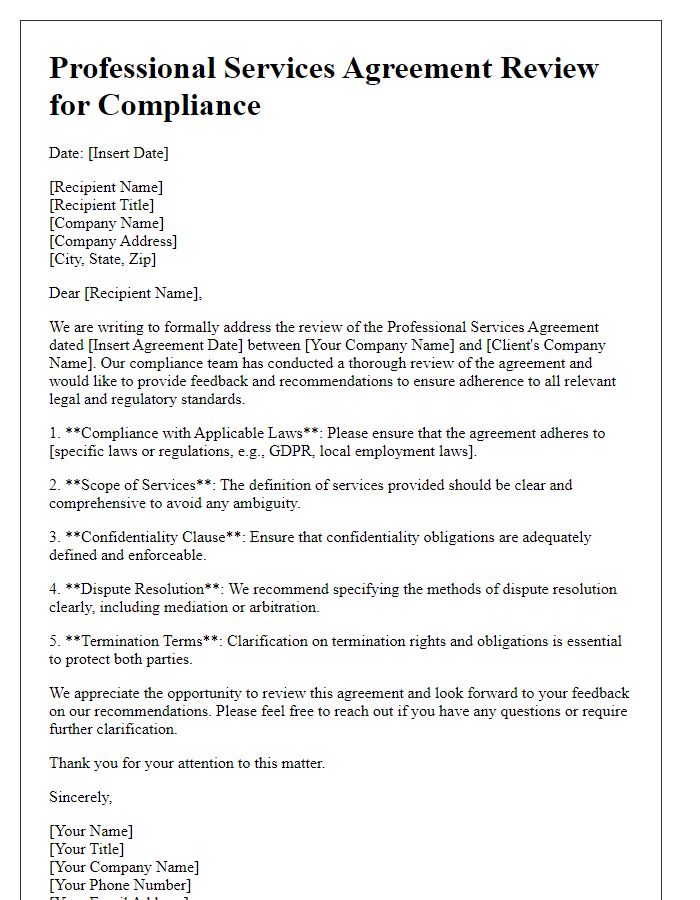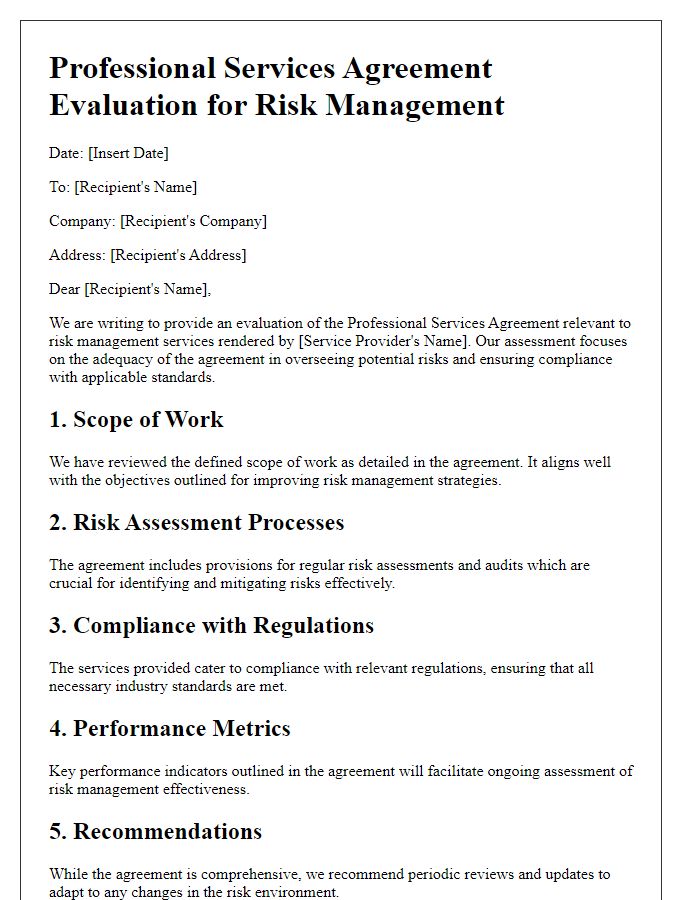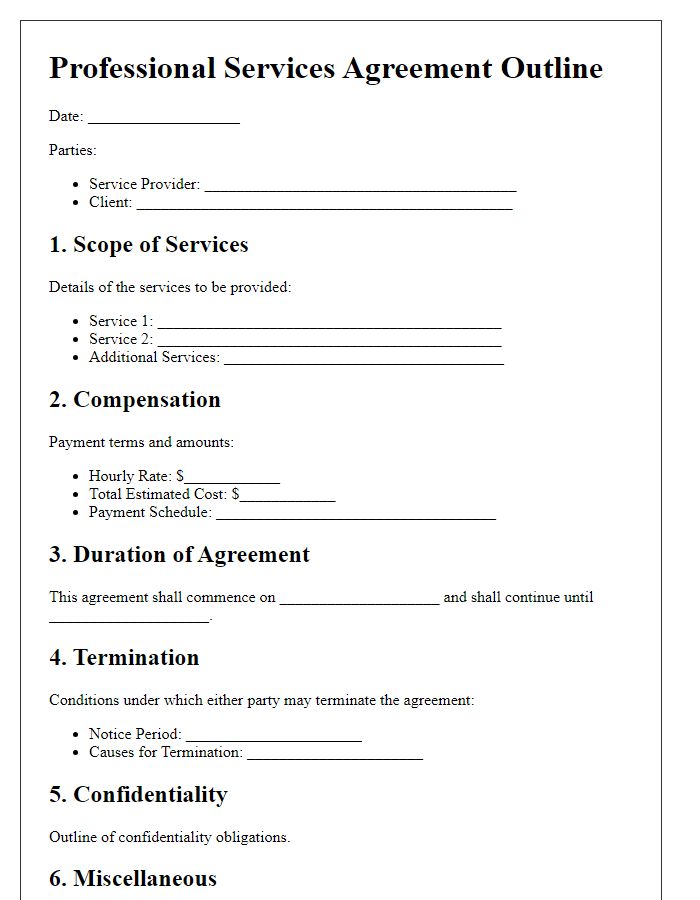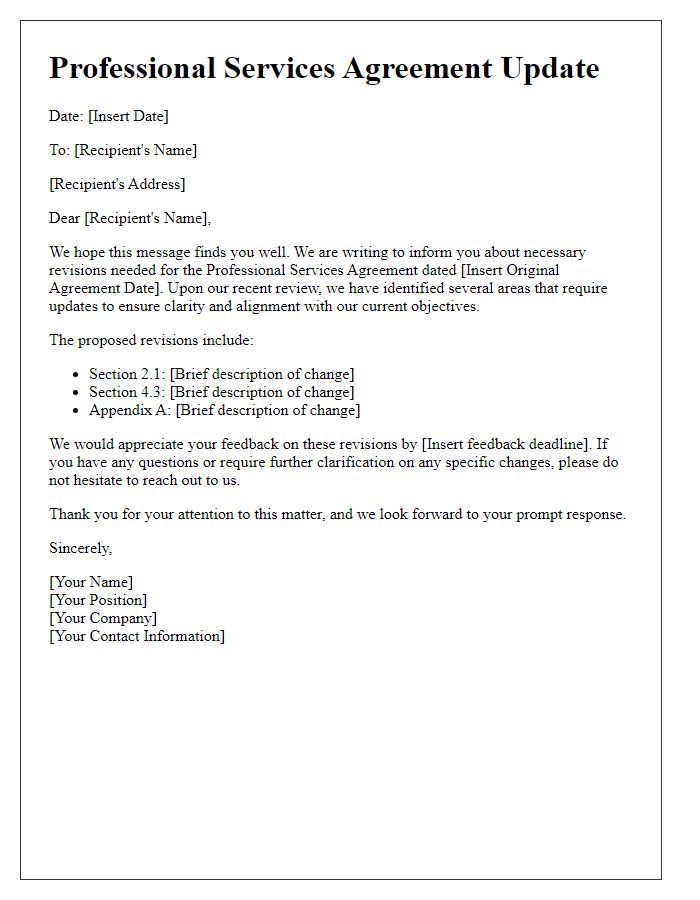When it comes to professional services agreements, having a clear and effective template is essential for ensuring that all parties understand their responsibilities and expectations. These agreements not only outline the scope of work but also protect the interests of both the provider and the client. In this article, we'll explore the key elements that should be included in your professional services agreement template and why they matter. So, if you're ready to create a solid foundation for your business relationships, keep reading!

Introduction and purpose
A professional services agreement (PSA) is a formal document that outlines the terms and conditions governing the relationship between service providers and clients for high-level services such as consulting, legal, or architectural. The purpose of this assessment is to evaluate the clarity, comprehensiveness, and fairness of the agreement, ensuring that both parties' expectations, responsibilities, and obligations are well-defined. Key components to review include scope of work (specific tasks to be performed), payment terms (fees, billing cycles, and late payment penalties), confidentiality clauses (protection of sensitive information), and termination conditions (circumstances allowing for contract dissolution). A well-drafted PSA fosters mutual understanding and minimizes potential disputes, thereby enhancing the professional relationship and promoting successful project outcomes.
Scope of services
The scope of services in a professional services agreement outlines the specific tasks and responsibilities expected from the service provider, such as legal, consulting, or engineering services. Detailed descriptions include project phases, deliverables, timelines, and milestones, ensuring clarity for both parties. For example, in architectural services, tasks may involve initial concept design, site analysis, and final construction documentation. In consulting services, activities could encompass market analysis, strategy development, and implementation support. Furthermore, inclusion of any regulatory compliance requirements, client collaboration stipulations, and ongoing maintenance agreements ensures a comprehensive understanding of the services provided. This clarity prevents misunderstandings and fosters a collaborative environment throughout the engagement.
Payment terms
A professional services agreement outlines the payment terms between a service provider and a client. Payment frequency varies across different agreements, often occurring on a monthly, bi-weekly, or project milestone basis. Rates can be structured as fixed fees, hourly rates, or retainer arrangements, where clients pay a preset amount for ongoing services. Late payment penalties, typically a percentage of the outstanding amount per month, may apply in cases of overdue invoices. Payment methods can include bank transfers, checks, or online payment platforms, ensuring timely and secure transactions. Clear terms significantly enhance mutual understanding and foster professional relationships.
Confidentiality and data protection
Confidentiality in professional services agreements safeguards sensitive information shared between parties. Data protection laws, such as GDPR in Europe, outline strict guidelines for handling personal data. Ensuring confidentiality involves implementing security measures, like encryption and secure storage, to prevent unauthorized access. Regular audits and staff training can reinforce compliance with data protection principles. Breaches of confidentiality may lead to legal consequences, including fines or lawsuits, emphasizing the importance of clear clauses in contracts that define confidentiality obligations and data handling practices.
Termination and dispute resolution
In professional services agreements, termination clauses define the conditions under which either party can end the contract. Standard notice periods (often 30 days) ensure a structured termination process, safeguarding both parties' interests. Dispute resolution mechanisms, typically involving mediation or arbitration, provide alternatives to litigation, fostering efficient conflict resolution. Mediation often precedes arbitration, allowing for amicable settlements outside court systems. Specific jurisdiction guidelines, citing local laws (for example, New York State law), clarify the legal framework governing disputes. Clear definitions of "cause," such as breach of contract or failure to perform services, provide solid grounds for termination, ensuring both parties understand their rights and obligations in maintaining their professional relationship.
Letter Template For Professional Services Agreement Assessment Samples
Letter template of professional services agreement review for compliance.

Letter template of professional services agreement evaluation for risk management.

Letter template of professional services agreement analysis for future planning.

Letter template of professional services agreement summary for stakeholder communication.

Letter template of professional services agreement feedback for performance improvement.

Letter template of professional services agreement breakdown for clarity of terms.

Letter template of professional services agreement comparison for competitive analysis.

Letter template of professional services agreement outline for negotiation purposes.

Letter template of professional services agreement update for revisions needed.





Comments